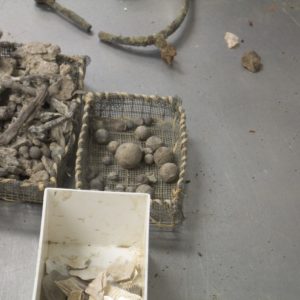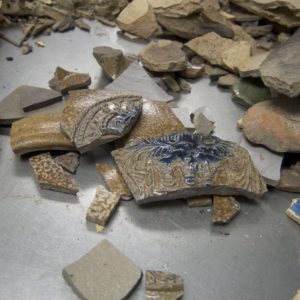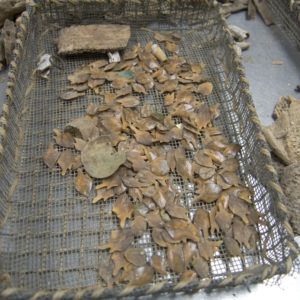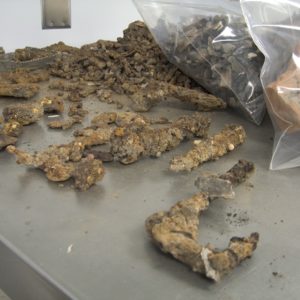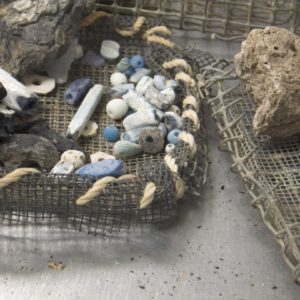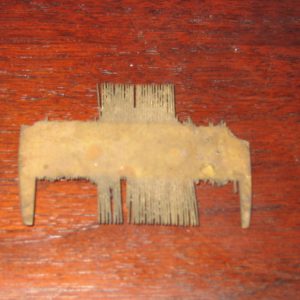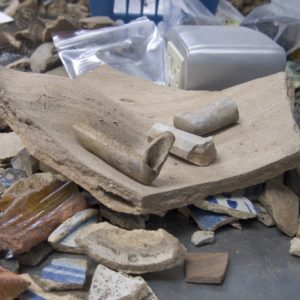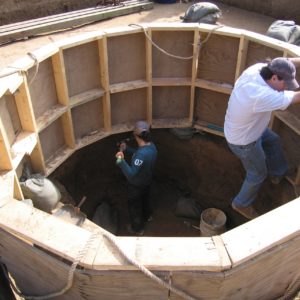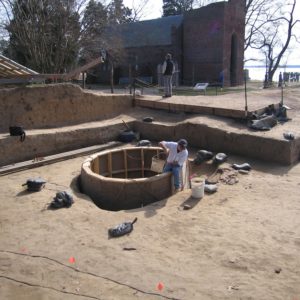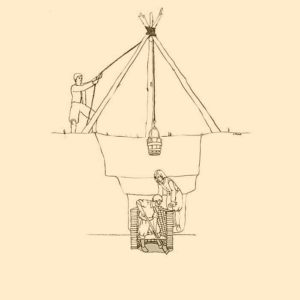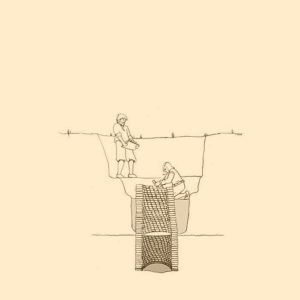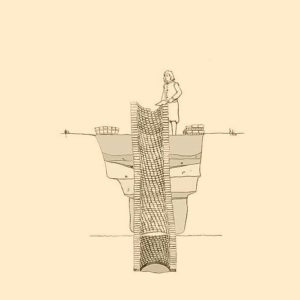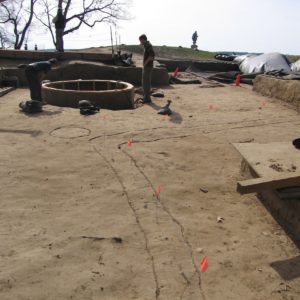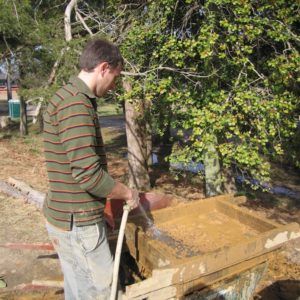Because of an unusually mild January, Jamestown Rediscovery archaeologists have been able to make solid progress in the excavation of a very early well inside James Fort. Situated very close to the northern bulwark, the well dates to one of the earliest periods of the fort’s history. It is very likely that this well was the one that Captain John Smith ordered to be built in 1609, the fort’s first.
The archaeologists have built a wooden support to prevent the well from collapsing on them as they dig down towards the water table. As was the case with previously excavated wells, the settlers used this one as a trash pit once it ceased to be used as a water source. Thousands of artifacts have already turned up in the well and in the builders’ trench surrounding it.
Bones from a variety of animals have been excavated in huge numbers, giving us some insight into the diet of the early settlers. Impressively-sized boar tusks and jaw bones, crab claws, oyster and clam shells, gar scales, and sturgeon scutes have turned up in the well.
Pottery of both European and Native American origin is coming out of the well. Burned corn cobs discovered in the well could possibly be evidence of corn’s use as a fuel source once its kernels were consumed. Thin sheets of mica fashioned as a type of glass, perhaps for use in a lantern, were also found. A pair of scissors and several hair combs have been excavated as well as numerous iron objects such as gun locks.
The archaeologists are about nine feet deep into the well at this point.
related images
- Well just after hearth was removed
- Various sized shot found in the well
- Sherds of the medallion of a Bellarmine jug
- Piece of Native American pottery with cross-hatch pattern
- Scales from a gar (fish)
- Rusted iron objects from the well
- Various beads found in the well
- Bone or ivory comb
- Pipes found in the well, including one made by Robert Cotton
- Archaeologists excavating the well
- The well with the outline of the western palisade wall in foreground, church tower in backgroun
- Constructing a well, part 1
- Constructing a well, part 2
- Constructing a well, part 3
- Well with outline of curved bulwark wall in foreground
- Screening the well’s contents for small artifacts
- Danny Schmidt giving a tour to visitors above the well




